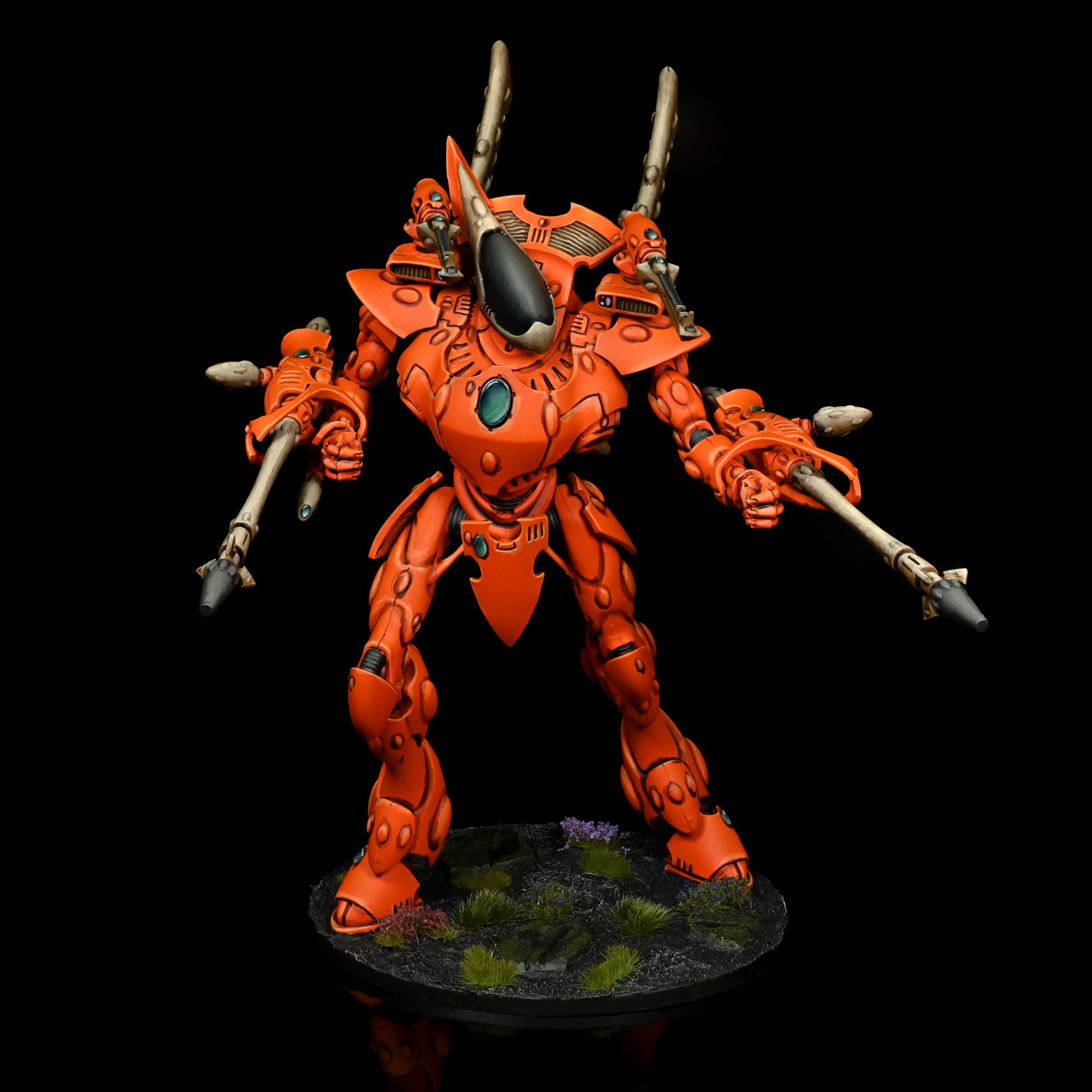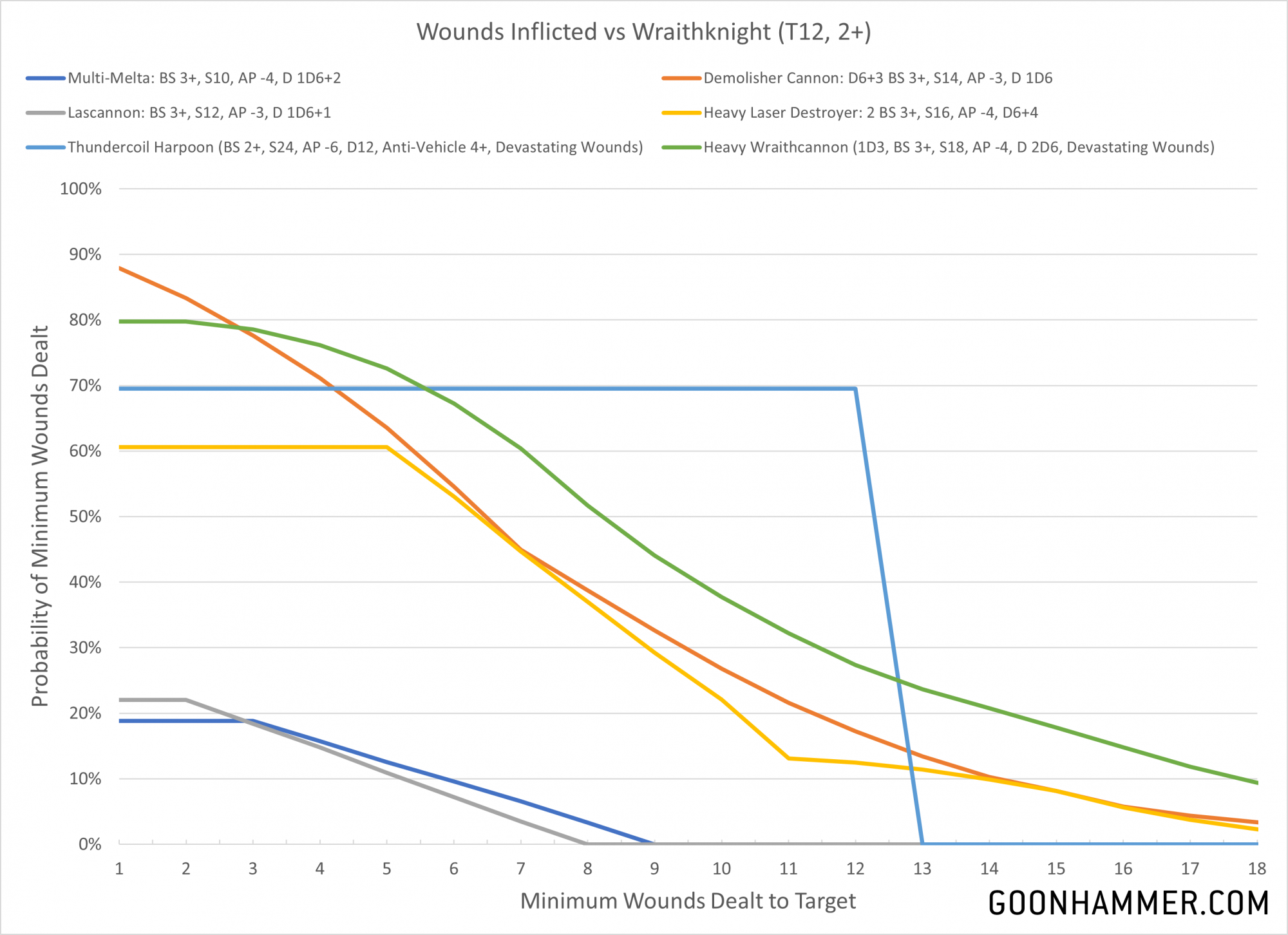We’re… a bit On One this week, after having to suffer through yet another week of Eldar dominance in our weekly Competitive Innovations columns. This week’s Hammer of Math takes a fair and balanced look at a unit which is perfectly costed for how effective it is on the battlefield.
Warhammer. Warhammer never changes. For as long as there have been elves, there has been Elf Bullshit. When the elves moved to space, their bullshit followed. 10th Edition is no different, and in a world full of turmoil and uncertainty sometimes it’s nice to see a bit of consistency. This is not one of those times. We have already covered Strands of Fate a bit in a previous article, so instead we’re going to focus on the latest distillation of Elf Bullshit in the form of the Wraithknight. It should be noted that the Battle Host Detachment rule, Unparalleled Foresight, dovetails nicely with individual units since it allows one Hit roll and one Wound roll to be re-rolled per selection to shoot or fight.
Rob: In my earliest games of 10th – in which GW invited us to play before release – I played my first game against an Eldar army running lots of Dire Avengers, bikes, and howling banshees. At the time Fate Dice seemed fine. Then I played a second preview game against Liam’s Eldar running an Avatar and immediately realized what a fool I’d been.

While they certainly can win without one, the Wraithknight has become a core component of many competitive Aeldari armies. When kitted with a pair of heavy wraithcannons, this little titan can put out an immense amount of firepower while still being fairly difficult to kill and obnoxiously maneuverable (especially with Stratagems like Fire and Fade or Phantasm, both of which allow the Wraithknight to move out of harm’s way after firing). Given that 10th Edition is primary a game of hitting hard, moving fast, and surviving incoming fire you can see why this thing might be useful. And while it’s not exactly cheap at 475 points, every one of those points is efficiently allocated towards a singular purpose in a way that other units (like say… the Repulsor Executioner) are not.
Lethal Output
The Wraithknight can be armed with a pair of heavy wraithcannons, which are individually capable of putting out D3 BS 3+, S20, AP -4, 2D6 damage shots with the [BLAST] and [DEVASTATING WOUNDS] keywords. This translates to a pretty devastating amount of damage to anything that doesn’t have an invulnerable save, with even a single heavy wraithcannon having a 1 in 6 chance of killing a Land Raider in one shot (against Repulsors it’s 1 in 5). Lighter targets like a Gladiator will get taken out in a single shot 44% of the time. This doesn’t include the obvious benefit of tossing in Strands of Fate to guarantee a Wound roll of 6 and inflict 2D6 mortal wounds. In what should not be a surprise there’s a huge advantage in going first in this situation, with a mirror match resulting in a 40% chance of inflicting those 18 wounds in a single turn. Add in the Benefit of Cover and that chance drops down to 30% before Elf Bullshit messes with fate.
 From a practical standpoint this also makes the Wraithknight a bit of a terror when it comes to Overwatch, as it has about 62% odds of nailing a single hit on average shots (4) using its re-roll, which then frees it up to use Strands of Fate on the Wound Roll if it doesn’t score a devastating wound on the first try (31% odds), after which it can push out an average of 7 mortal wounds if there’s still a Strands dice available.
From a practical standpoint this also makes the Wraithknight a bit of a terror when it comes to Overwatch, as it has about 62% odds of nailing a single hit on average shots (4) using its re-roll, which then frees it up to use Strands of Fate on the Wound Roll if it doesn’t score a devastating wound on the first try (31% odds), after which it can push out an average of 7 mortal wounds if there’s still a Strands dice available.
Rob: As someone who has lost six Scarab Occult Terminators to Wraithknight Overwatch before, I can tell you emphatically that this is bullshit. There’s nothing worse than watching an Eldar player spiking rolls before choosing whether to use Fate Dice.
Wounding a Wraithknight
Naturally if you see enough of these things on the table, you’re going to want to kill them. So what kind of damage can you reliably expect to inflict on an 18-wound monstrosity with T12 and a 2+ save? Well the answer is… not much. Single-shot weapons like the lascannon and multi-melta suffer from having a poor chance to wound or get past the 2+ armor save. The demolisher cannon remains a reliable threat, especially since the multiple shots means that Strands of Fate will have less of an impact. Both the demolisher and heavy laser destroyer on the RepEx have a 5% chance of dealing enough damage, but heavy wraithcannon remains the superior choice.
 Rob: If you’re going after the Wraithknight, your sole consolation is that it does not have an invulnerable save thanks to always taking two D-cannons. So if you have the high-AP firepower, that can be one way to handle it, and the Thousand Sons provide another via Twist of Fate, though you’ll often find a Wraithknight can just Phantasm out of your 24″ range to avoid your shooting for another turn. You can also attempt to bomb the Wraithknight with mortal wounds, something Thousand Sons can do, or make good use of Indirect Firepower.
Rob: If you’re going after the Wraithknight, your sole consolation is that it does not have an invulnerable save thanks to always taking two D-cannons. So if you have the high-AP firepower, that can be one way to handle it, and the Thousand Sons provide another via Twist of Fate, though you’ll often find a Wraithknight can just Phantasm out of your 24″ range to avoid your shooting for another turn. You can also attempt to bomb the Wraithknight with mortal wounds, something Thousand Sons can do, or make good use of Indirect Firepower.
Wrapping Up This Bullshit
It’s not surprising that a dedicated tank-killer with incredibly powerful guns and an insane amount of maneuverability is going to do extremely well in a game featuring high toughness threats and a victory point system that encourages moving across the battlefield. Focused, efficient units have always been effective in Warhammer 40k and the Wraithknight is no different. How to balance such a beast, outside of making it incredibly expensive, is not a task I envy.1
Thanks for reading! If you have any questions or comments feel free to drop us a note in the Comments below or email us at contact@goonhammer.com. That’s also the best way to suggest topics for future articles.



